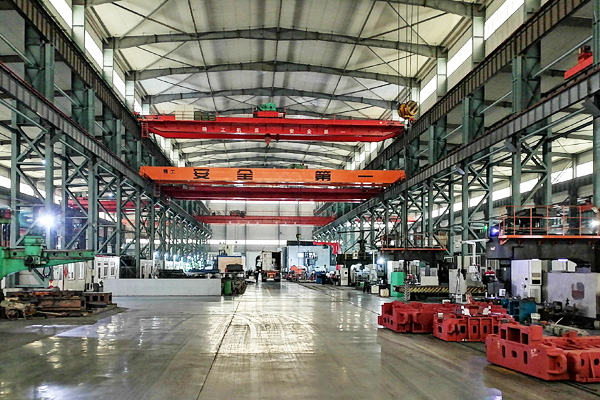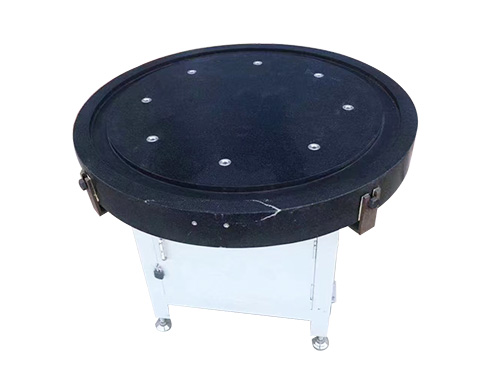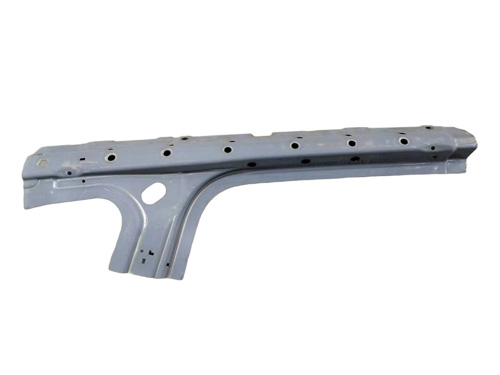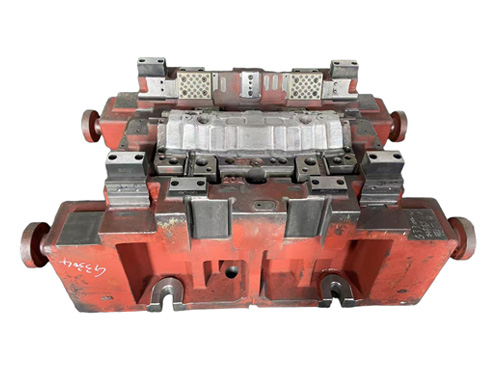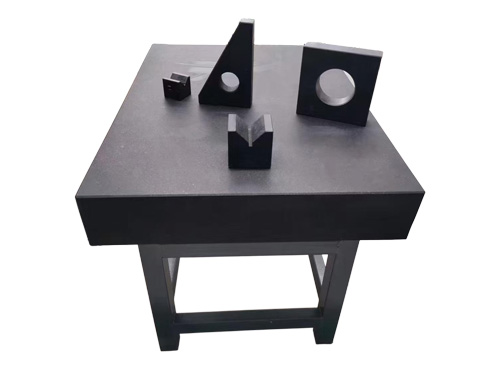News Detail
Essential Guide for Beginners: Comprehensive Overview of Operating Procedures and Safety Precautions for welding table
author:hxrtools Time:2025-06-11 08:45:23 Click:127
I. Introduction: The Importance of Standardized Operations and Safety
For beginners new to welding, the welding workbench serves as a crucial piece of foundational equipment for conducting welding tasks. Standardized operation of the welding workbench not only ensures welding quality and efficiency but is also key to safeguarding the personal safety of operators. Improper operation can lead to equipment damage, welding quality defects, and even serious safety accidents such as electric shocks and fires. Therefore, mastering the operating procedures and safety precautions for welding table is a mandatory course for beginners on their journey to becoming professional welders.
II. Preparations Before Operation
(A) Equipment Inspection
Before starting the welding workbench, a comprehensive inspection of the equipment is necessary. Check if the workbench's frame structure is stable, and if there are any loose, deformed, or cracked parts at the connections. Verify that the height and angle adjustment mechanisms are flexible and functioning properly. Confirm that accessories such as fixtures and tool slots are complete and in good condition. For workbenches equipped with power or gas connections, inspect the wiring connections for firmness and check gas pipelines for leaks to ensure the equipment is in a safe and operational state.
(B) Work Environment Organization
Clear the area around the workbench to ensure ample operating space free from obstructions, facilitating unrestricted movement and operation. Maintain good ventilation in the work environment, especially during welding operations that generate harmful gases or fumes, to prevent the accumulation of hazardous substances. Avoid using the welding workbench in damp, flammable, or explosive environments to eliminate potential safety hazards.
(C) Workpiece and Tool Preparation
Select appropriate workpieces according to the welding task requirements and pre-treat them, such as removing surface oil stains, rust, and other impurities to ensure the welding area is clean. Prepare the necessary welding tools, including welding guns, masks, gloves, etc., and check that they are intact and functioning properly. Place the tools in the tool slots of the workbench or easily accessible locations for quick retrieval during operation.
III. Standard Operating Requirements During the Process
(A) Workpiece Fixation and Positioning
When using the fixtures provided with the workbench to secure workpieces, ensure that the fixtures grip the workpieces firmly to prevent slipping or displacement during welding. Choose suitable fixture types and fixation methods based on the shape, size, and weight of the workpieces, and adjust the fixture positions to place the workpieces in the optimal welding position. For irregularly shaped workpieces, auxiliary support tools can be used to ensure stability.
(B) Adjusting Workbench Parameters
If the welding workbench has height and angle adjustment capabilities, adjust it to a suitable height and angle according to the operator's body size and welding requirements. Ensure that the arms can extend naturally and the body posture is comfortable during operation to reduce fatigue. Additionally, reasonably adjust the workbench surface angle according to the welding requirements of the workpieces to facilitate welding operations from different orientations.
(C) Welding Operation Procedures
Follow the welding process requirements strictly, controlling parameters such as welding current, voltage, and welding speed. During welding, maintain an appropriate angle and distance between the welding gun and the workpiece, moving the welding gun at a uniform speed to ensure uniform and smooth welds. Avoid excessive welding at the same position for extended periods to prevent burn-through or deformation of the workpiece. After completing each welding segment, promptly clean welding slag and spatter, inspect the welding quality, and repair any defects promptly.
(D) Tool Usage Specifications
Use welding tools correctly, such as holding the welding gun in a standardized manner to prevent loss of control or compromised welding quality due to improper posture. After use, promptly return the tools to the tool slots or designated locations to avoid damage or safety accidents caused by improper placement. For electric tools, check the power cords for damage before use and cut off the power supply promptly after use.
IV. Common Operational Errors and Avoidance Methods
(A) Overloading the Workbench
Avoid placing workpieces exceeding the workbench's load-bearing capacity to prevent structural damage or tipping accidents. Before placing heavy workpieces, confirm the workbench's load-bearing parameters and distribute the workpiece weight reasonably to maintain balance.
(B) Non-Standard Adjustment Operations
When adjusting the workbench's height and angle, operate the adjustment mechanisms slowly to avoid rapid or violent adjustments that could damage the equipment or displace the workpiece. After adjustment, promptly lock the adjustment mechanisms to prevent changes in workbench parameters during welding due to vibrations or other factors.
(C) Neglecting Cleaning
Welding slag and metal debris generated during welding, if not cleaned promptly, may accumulate on the workbench surface or in crevices, affecting normal equipment operation and even causing short circuits. Therefore, develop the habit of cleaning regularly to maintain a clean workbench.
V. Safety Precautions
(A) Electrical Safety
When the welding workbench involves electrical equipment, operators must wear insulating gloves and shoes to prevent electric shock accidents. Avoid contacting electrical components in damp environments and regularly inspect electrical wiring, replacing any aged or damaged parts promptly. During equipment maintenance or inspection, always cut off the power supply first and hang warning signs.
(B) Fire and Explosion Prevention
Welding operations generate high-temperature sparks and arcs that can easily ignite fires. Equip the work area with fire extinguishers and ensure clear passages. Strictly prohibit welding operations in areas storing flammable and explosive materials. Clean the welding workpieces to remove surface flammable substances, such as paint and oil stains. After welding, thoroughly inspect the work area to confirm no residual fire sources remain.
(C) Personal Protection
Wearing appropriate personal protective equipment is a crucial safety measure. Operators must wear welding masks to protect their eyes and faces from arc light and spark burns; don welding gloves and protective clothing to prevent skin burns; and wear protective masks or respirators when working in poorly ventilated environments to avoid inhaling harmful gases and dust.
(D) Emergency Response
Understand basic emergency response methods, such as immediately cutting off the power supply and using insulating objects to separate the victim from the power source in the event of an electric shock, followed by first aid. In case of a fire, promptly use fire extinguishers to put out the fire and call the fire department. Regularly participate in safety training and emergency drills to enhance the ability to respond to sudden accidents.
VI. Post-Operation Cleanup
After completing the welding operation, turn off the power and gas sources of the welding workbench, clean the workbench surface and surrounding areas of welding slag, debris, and杂物 (foreign matter), and maintain a tidy work environment. Conduct a brief inspection of the workbench, recording and reporting any damage or abnormalities promptly. Store tools and remaining materials properly to prepare for the next operation.
VII. Conclusion: Standardized and Safe Operations Foster Professional Development
Mastering the operating procedures and safety precautions for welding table is the foundation for beginners to carry out welding work smoothly. From pre-operation preparations to in-process standard requirements, and extending to safety protection and emergency response, every step is of utmost importance. Only by strictly adhering to operating procedures and prioritizing safety can operators ensure their own safety while improving welding quality and efficiency, laying a solid foundation for future professional development. With the accumulation of experience and advancement of skills, standardized and safe operating habits will also become an important manifestation of personal professionalism.
 HOT PRODUCTS
HOT PRODUCTS
 CONTACT US
CONTACT US
—— E-mail:project@haoranmj.com
—— Whatsapp:+86 18932785670
—— Tel:+86 18932785670
—— Add:Across from Sanjing Distillery on Road 4, Botou Economic Development Zone, Cangzhou City, Hebei Province









